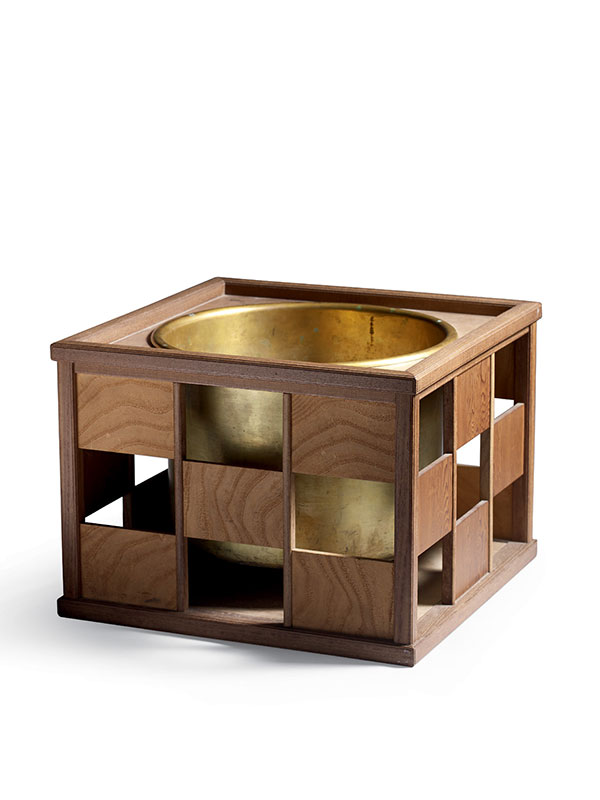Wood and copper hibachi
A hibachi of square format, the straight sides composed of four or five rectangular well-figured wood panels, alternating with voids, through which one is able to see the copper inner bowl of the hibachi. The hibachi is supported on a wood base and the top rims are also made of wood. The hibachi is preserved in its original tomobako or wooden box that has two inscriptions, reading “Ichimatsu moyo, kuwa-buchi bingake, ki no takumi, Kusumasa kore o tsukuru” (This is made by a master wood craftsman Kusumasa, checkerboard design, Hibachi crafted with mulberry wood).
A hibachi, literally meaning ‘fire bowl’, is an open-topped container that functions traditionally as a heating device in Japan and was designed to hold burning charcoal. It is unusual to see a square hibachi: most examples are round to better accommodate the metal bowl that is fitted inside and serves as the actual warmer.

